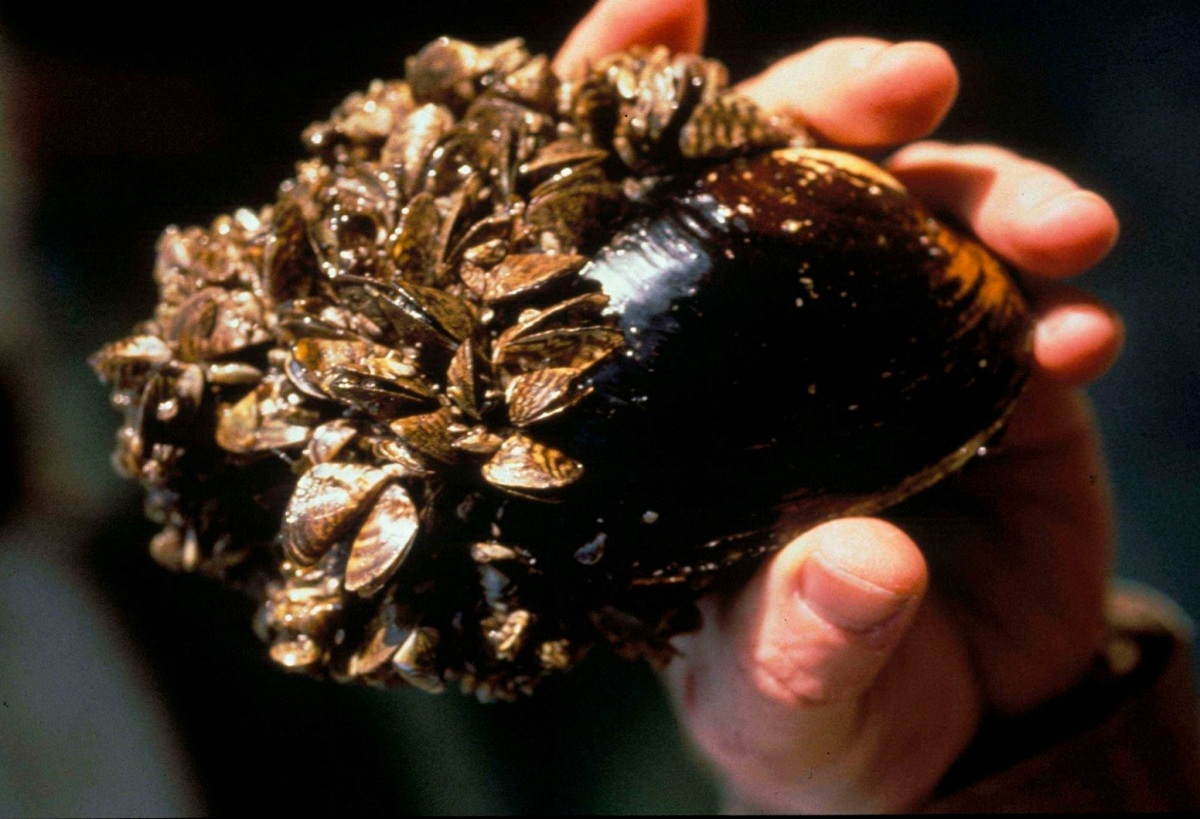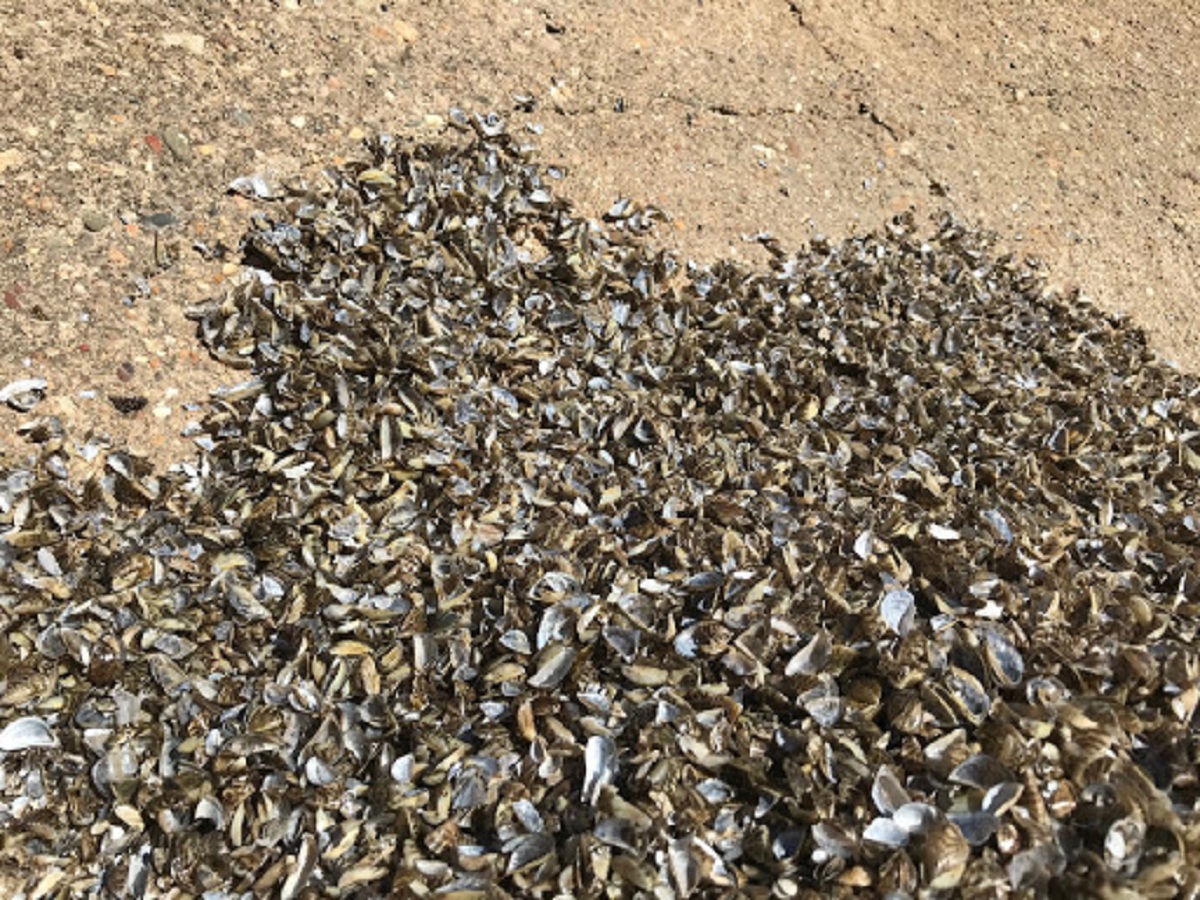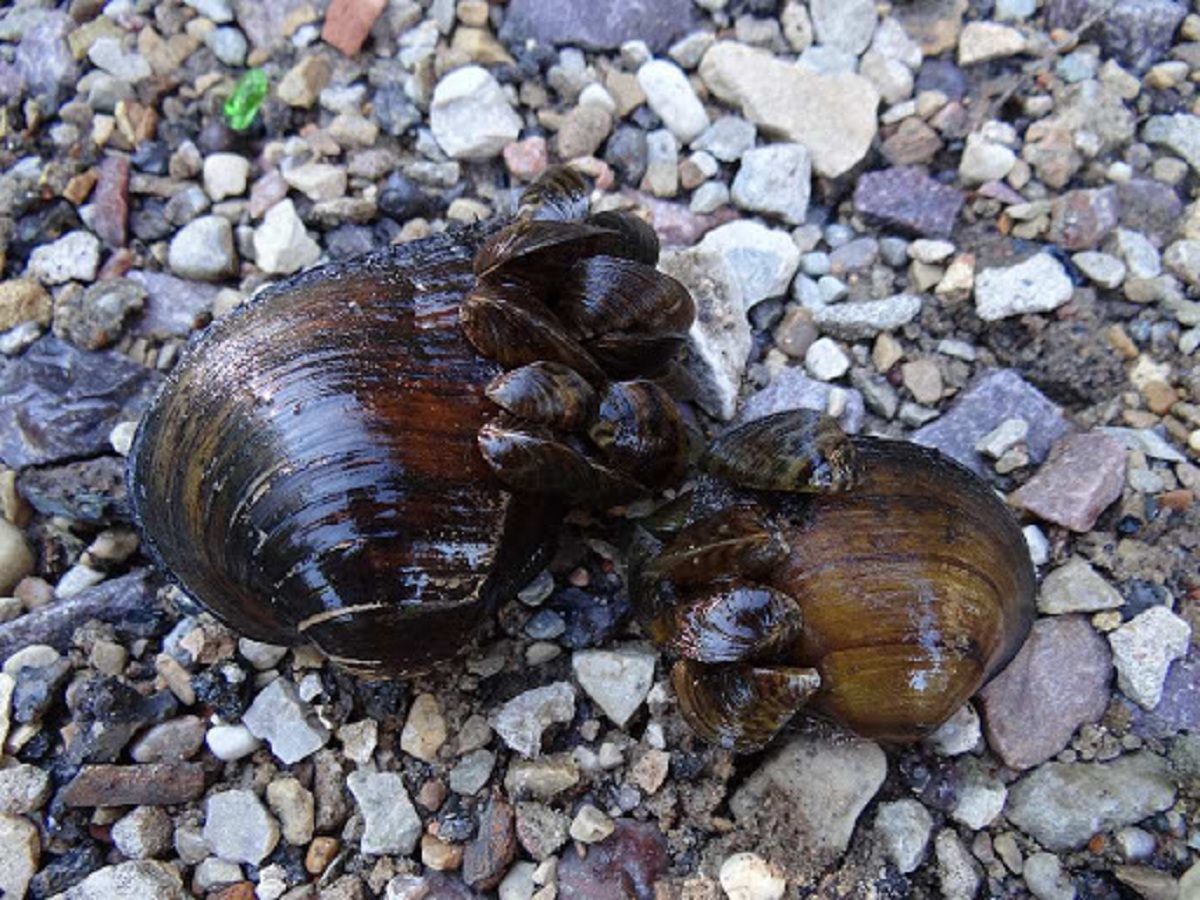
One of the species that has become invasive in freshwater courses and saltwater environments is the zebra mussel. Its common name comes from the color of its shell that resembles that of a certificate. It has a light brown hue crossed by dark zig zag stripes. This bivalve has become one of the invasive species in various ecosystems and is causing some damage as we will see below.
In this article we are going to tell you all the characteristics of the invasive zebra mussel species.
History as an invasive species

It is a smaller bivalve than other mussel species. They are capable of reaching as little as 3 cm as adult individuals. One of the most striking characteristics of this species is that individuals tend to develop in colonies. These colonies are placed in the bed covering all the gaps and later mussels grow on top of others. This means that it can have very high population densities of up to thousands of individuals per square meter.
It is one of the reasons why it has become one of the best known invasive species. And, one of the characteristics that remains in all invasive species is their ease of reproduction. You can easily distinguish the zebra mussel by the stripes present on its shell from which it receives its common name. This animal appears on the list of the 100 most harmful invasive alien species in the world.
The natural range of this species is the Black, Caspian and Aral Seas. During the 1985th century it began to expand through the water courses of the European continent, reaching the Great Lakes of the United States in XNUMX, to later occupy the Mississippi and the Caribbean coast. The reason why this species is invasive is its high reproductive capacity. And it is that, only an adult specimen can release to the environment between a million and a million and a half larvae over a year.
The species is somewhat more problematic for several reasons. The first is the exaggerated growth of the colonies that causes damage to infrastructures and alters the composition of phytoplankton. The great development and reproductive capacity together with the density of the populations make it an invasive species. To this must also be added the great resistance it has to different environmental conditions. With all these characteristics they have been able to occupy large areas of watercourses and lakes in a short time.
Zebra mussel as a problem species

By forming compact cones of individuals, these colonies can cause damage to the infrastructure of the ecosystem and alter the composition of the phytoplankton. As we know, phytoplankton is essential for the food chain in aquatic environments. All these individuals are capable of blocking pipes or water reservoirs of the human being, which requires the physical elimination of the specimens. These organisms are resistant to chemicals such as chlorine. Therefore, they must be eliminated using systems that would negatively affect the environment.
To eliminate this type of invasive species, we do not want to pollute the environment, we just have to eliminate the specific species. They have a prodigious water filtering capacity. They are capable of filtering up to 8.5 liters of water per individual per day. This becomes quite a challenge when it comes to eliminating these populations. It must be added that, to the population density that they can have per square meter, they are capable of filtering a large volume of water continuously.
This filtering capacity has several consequences. On the one hand, the amount of phytoplankton that is present in the water course is reduced. This negatively affects the rest of the species that feed on phytoplankton. On the other hand, we have clarified waters that by eliminating the excess of suspended particles we can have crystal clear water. It can be said that this is a positive consequence. But the negative is much worse.
In some areas of northern Europe they are already having problems of river pollution and consider the zebra mussel beneficial thanks to its filtering capacity. However, it is useless to have water of very good quality if this species is harmful to other aquatic species. It turns out to be a controversy be able to classify this species as beneficial. It can be beneficial for humans up to a point but not for other species.
The situation in Spain of the zebra mussel
The adult specimens are capable of forming colonies that grow on top of each other. This causes them to reach very dense populations and that filters in large volumes of water in a short time. The resistance of the species is very high and its high reproduction rate causes direct economic damage in Spain. The economic losses that this species caused in the United States in a period of 10 years exceed 1.600 million euros.
In Spain, the Ministry of the Environment dedicated 300 million to combat the species between 2003 and 2006. The species was detected in the Ebro river basin in 2001. The density of individuals was very low, but in subsequent years it was able to expand to the Júcar and Segura basins. These populations managed to go back to those of the course of the Ebro and reached the base of a Undugarra in Vizcaya in 2011. Other points where these specimens have been detected is in the Sobrón dam, in Burgos, and the Puentelarrá hydroelectric jump , in Álava.
For now they have expanded us to other places, although it seems that it is only a matter of time. The zebra mussel is not intentionally introduced by humans into the rivers it invades. This means that for humans this it has no economic benefit.
There are some summer control strategies a clear solution to the problem. The use of filters prevents the passage of the larvae to water transport conduits such as hydroelectric power plants.
I hope that with this information you can learn more about the zebra mussel and its status as an invasive species.
